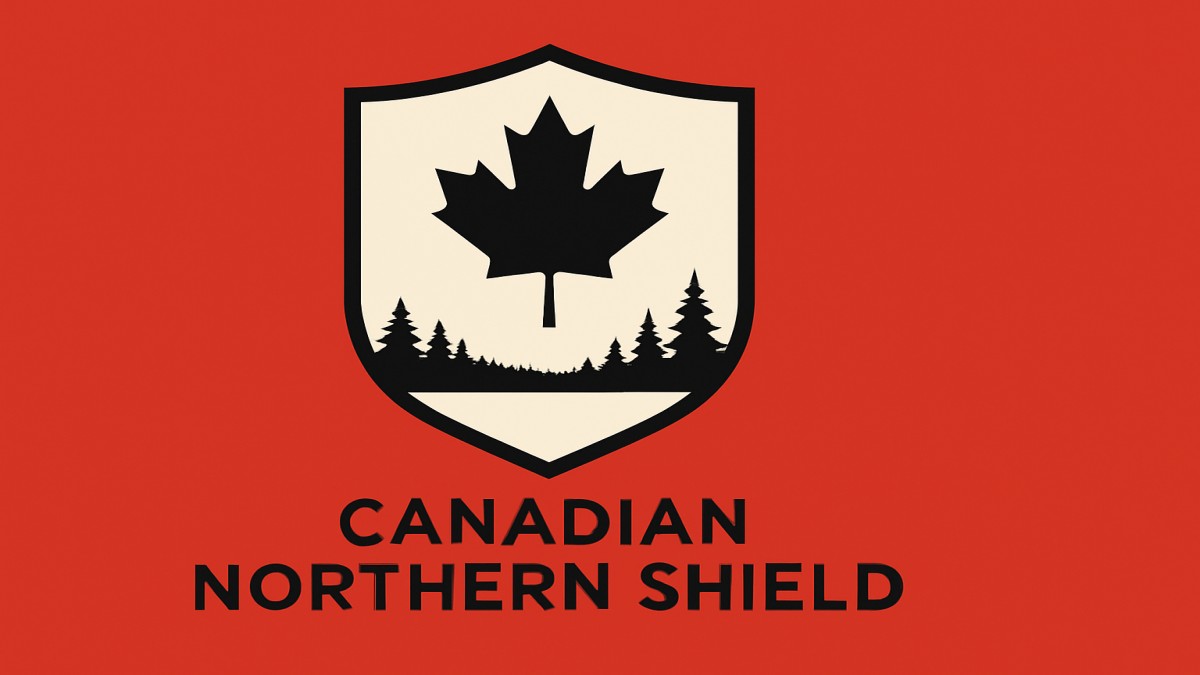Introduction
The Canadian Northern Shield is one of the oldest and most fascinating landforms on Earth. Stretching across half of Canada, this vast, rocky expanse tells the tale of a time before life as we know it. It’s a land shaped by fire, ice, and time rugged, raw, and surprisingly beautiful.
Geological Background
Formation of the Canadian Shield
Imagine the Earth 4 billion years ago molten, hostile, and young. That’s when the roots of the Canadian Shield first began forming. It’s considered a craton, the ancient core of the North American continent, forged by volcanic and tectonic activity.
Age and Rock Composition
Most of the rocks in the Shield are Precambrian, making them among the oldest on the planet. You’ll find tough igneous and metamorphic rocks, like granite and gneiss, that have stood the test of time.
Glacial Impact on the Terrain
Fast-forward to the Ice Age: glaciers moved across this landscape like bulldozers. When they melted, they left behind a patchwork of barren rock outcrops, thousands of lakes, and poor, thin soils.
Location and Geography
Provinces Covered by the Northern Shield
The Shield spans across Quebec, Ontario, Manitoba, Saskatchewan, Alberta, Nunavut, and even dips into Newfoundland and Labrador. That’s a massive footprint!
Major Landforms and Features
Despite its ruggedness, the Shield isn’t mountainous. It’s more like a plateau, deeply eroded over eons. You’ll see exposed bedrock, boreal forests, and seemingly endless lakes and rivers.
Climate Characteristics
Harsh winters and brief, warm summers define this region. The climate ranges from subarctic in the north to humid continental in the south.
Natural Resources
Mineral Richness
Here’s where it gets really interesting—this ancient land is loaded with minerals. Think nickel, copper, gold, diamonds, and uranium. The Shield is a goldmine, quite literally, for Canada’s mining industry.
Forests and Freshwater Bodies
The boreal forest covers much of the Shield, and it’s one of the largest carbon sinks on the planet. Add in millions of lakes (seriously), and you’ve got a water-rich region vital to life.
Role in Canadian Economy
From timber to minerals, the Shield helps power Canada’s economy. However, there’s a constant balancing act between resource extraction and environmental conservation.
Biodiversity and Ecosystems
Flora of the Northern Shield
While the soil is poor, black spruce, jack pine, and lichen thrive here. It’s a true survival zone for tough plant species.
Fauna Adapted to Harsh Conditions
Think moose, black bears, lynx, and wolves. Birds like loons and owls also call this region home, along with countless insects and fish.
Protected Areas and National Parks
Parks like Wabakimi, La Vérendrye, and Pukaskwa help preserve the natural beauty and biodiversity of the Northern Shield for future generations.
Indigenous Heritage
First Nations and Inuit Communities
Indigenous peoples have lived here for thousands of years, relying on the land for food, shelter, and culture. Tribes like the Cree, Dene, and Ojibwe still thrive in the region.
Cultural Ties to the Land
To many, the Shield isn’t just geography—it’s a sacred connection to their ancestors, stories, and way of life.
Traditional Knowledge and Land Stewardship
Indigenous knowledge systems offer sustainable land practices that can help balance ecological protection with economic activity.
Modern Challenges
Climate Change Effects
Permafrost thaw, changing animal migration, and extreme weather are becoming more frequent. The Northern Shield is on the frontlines of climate change.
Mining and Environmental Concerns
While mining brings jobs, it can also lead to deforestation, water pollution, and habitat loss. Tough conversations and smart regulations are more important than ever.
Balancing Development and Conservation
Sustainable development in the Shield requires a collaborative approach—Indigenous voices, science, and government policy must align.
Conclusion
The Canadian Northern Shield is more than just rocks and trees. It’s a treasure trove of natural resources, a living cultural landscape, and a guardian of Earth’s geological history. Whether you’re a scientist, traveler, or conservationist, the Shield has something powerful to offer—and protect.
FAQs
1. Why is the Canadian Shield so important?
It holds vast mineral resources, supports biodiversity, and represents the Earth’s oldest geological features.
2. Can you visit the Canadian Shield?
Absolutely! Many parts are open for hiking, camping, canoeing, and cultural tourism.
3. What types of rocks are common in the Canadian Shield?
Primarily igneous and metamorphic rocks like granite, gneiss, and basalt.
4. Is the Canadian Shield good for farming?
Not really. The soil is thin and rocky, making agriculture difficult.
5. Who lives in the Canadian Shield today?
Mostly Indigenous communities, resource workers, and people in small remote towns.

 Blog2 months ago
Blog2 months ago
 education2 months ago
education2 months ago
 Blog2 weeks ago
Blog2 weeks ago
 News2 months ago
News2 months ago



















